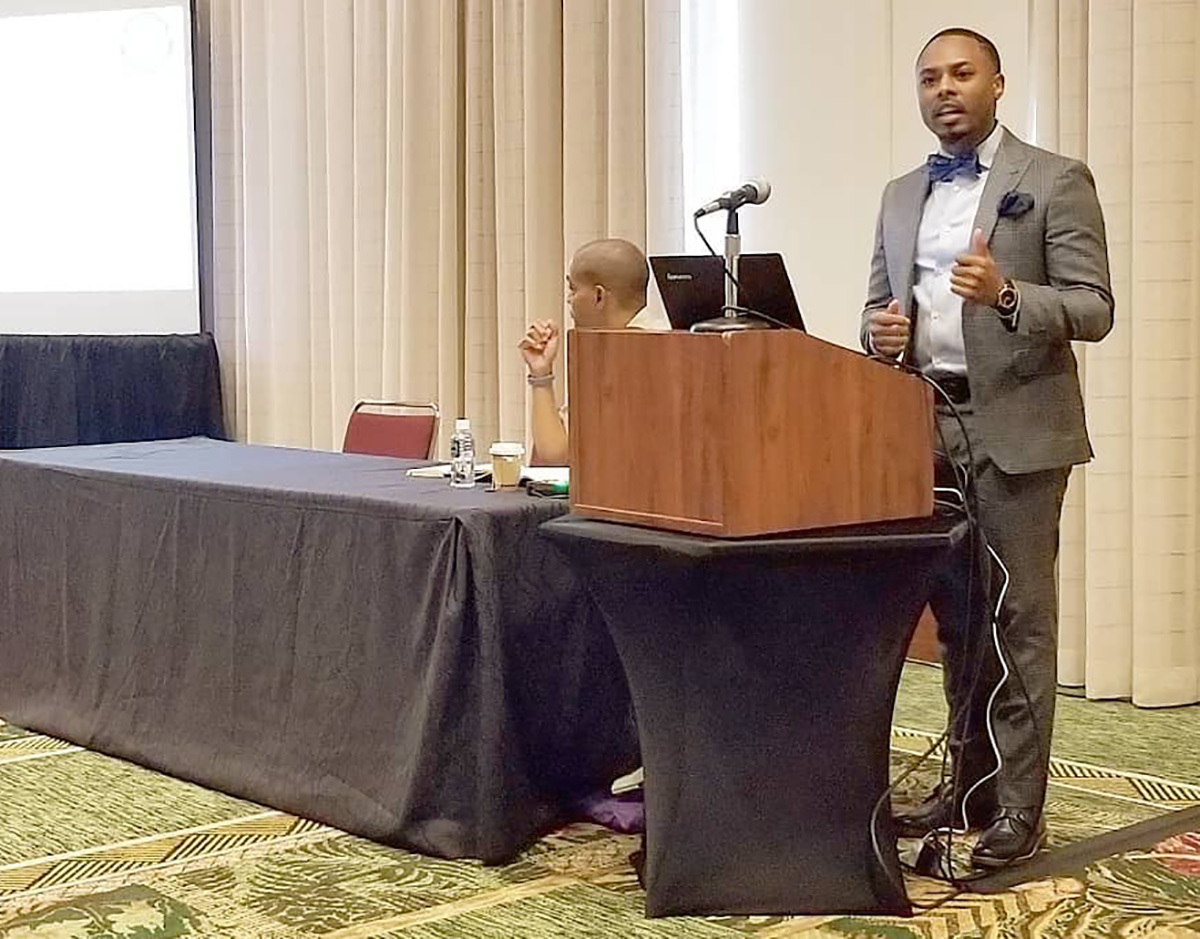
USA medical student awarded first place at NMA Convention
Zachary White, a third-year medical student at the University of South Alabama College of Medicine, recently won first place in the Radiology and Radiation Oncology Medical Student Oral Presentation section of the 117th National Medical Association (NMA) Annual Convention and Scientific Assembly in Honolulu.
By Nichelle Smith
Zachary White, a third-year medical student at the University of South Alabama College of Medicine, recently won first place in the Radiology and Radiation Oncology Medical Student Oral Presentation section of the 117th National Medical Association (NMA) Annual Convention and Scientific Assembly in Honolulu.
The research for his project, titled “Impact of ANXA7 I1 Expression on PDGFRA and MET Endosomal Trafficking in Glioblastoma Multiforme,” focused on glioblastoma multiforme – the most common and malignant brain tumor that is also highly resistant to both radiation and chemotherapy treatment.
“The tumor suppressor annexin A7 (ANXA7) is a membrane-binding protein that has two different forms – I1 and I2 – with only I1 being tumor suppressive,” White said. “In glioblastoma, I1 is absent or low and I2 is found in abundance.”
According to White, some signaling molecules that are involved on a cellular level in routine processes, such as EGFR, PDGFRA and MET, are normally activated in cases where you may have a wound and your body needs to grow new cells in order to heal. “However, these molecules are over-activated in cancers such as glioblastoma, which causes the cell to grow at an uncontrollable rate,” he said.
By better understanding how ANXA7 I1 impacts PDGFRA and MET signaling, White’s research has far-reaching potential to impact patient care. In cancers such as glioblastoma, receptor tyrosine kinases (RTKs) are mutated and this results in overgrowth of the tumor. In the research, he found that ANXA7 I1, specifically, causes a reduction in RTKs, which can result in a decrease in tumor growth.
“If we understand more about how I1 down-regulates RTKs, this could potentially lead to targeted therapy to cause a reduction in tumor growth in patients with glioblastoma,” he said. “When restored, ANXA7 I1 has the potential to downregulate the signals of tumor growth and reduce tumorigenicity. Ultimately, we hope to improve therapy options for patients with glioblastoma.”

White credits the experiences presented by the USA College of Medicine for preparing him for the convention. “I can’t thank the USA College of Medicine enough for supporting their students to achieve success in scientific research,” he said.
Attending the conference also enabled White to network with various physicians across the nation in the fields of radiation oncology and radiology.
“The highlight of my experience was listening to the lecture on ‘Navigating a Career in Academic Medicine’ given by Dr. Iris Gibbs, M.D., professor of radiation oncology at Stanford University,” he said. “As a medical student with a goal of becoming an academic physician, the lecture was both insightful and inspiring.”
Each year, African American physicians and other health professionals from across the country convene to participate in the scholarly exchange of medical advances, discuss health policy priorities, and to share experiences through networking opportunities at the National Medical Association’s Annual Convention and Scientific Assembly. The convention serves as the nation’s foremost forum on medical science and African American health. Through NMA’s 26 Scientific Specialty Sections, the Convention attracts the broadest spectrum of African American physicians, academicians and scientists in the country.





